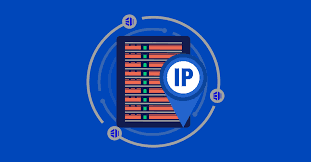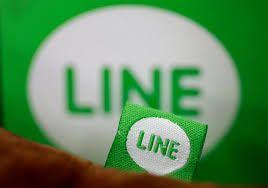What is Employee Recognition (Plus Examples)

LIKE.TG 成立于2020年,总部位于马来西亚,是首家汇集全球互联网产品,提供一站式软件产品解决方案的综合性品牌。唯一官方网站:www.like.tg
Your employees are your greatest asset. They play a pivotal role in the success of your company. As with any other valuable asset, you should nurture and protect them.
Bob Nelson, PhD, a motivational speaker and best-selling author once said, "Take time to appreciate employees and they will reciprocate in a thousand ways." This reciprocation includes higher productivity and greater loyalty.
According to a survey from Great Place to Work, 63% of employees who were regularly recognized indicated they would be unlikely to leave their job. Recognition also increased productivity, employee engagement, and performance by 14%.
Wondering where to start? Or what an effective employee recognition program would entail? Read on to find out more.
Overview of Employee Recognition
When employees do great work, they deserve to be appreciated for their efforts. Employee recognition is a way to acknowledge the exceptional work of members of your staff:
-
Quality of work
-
Initiative
-
Attitude
-
Personal growth
-
Leadership skills
-
Problem-solving
-
Adaptability
One way to do this is through an employee recognition program, a structured company initiative that rewards employees on their:
-
Individual achievements
-
Work anniversaries
-
Milestones
-
Contributions
-
Performance achievements
Your recognition program should align with your company's mission, vision, and values. This helps reinforce the company culture you've created. Based on your values, this may be a culture of excellence, success, honesty, and teamwork (see more about company culture software here).
Your employees should have a clear idea of their individual goals and how this affects company goals, ideally starting at the time of onboarding. Periodic positive reinforcement and constructive feedback helps them strive toward attaining them, promoting a culture of success and continuous self-improvement.
Benefits of Employee Recognition
Employee recognition is a win-win situation for both employers and employees. For employees, it fosters pride in their work and gives them a reason to keep on putting forth their best. This increases their level of productivity and sense of loyalty.
An employee who trusts their organization is more inclined to contribute to company goals. They look at it as a team effort. They know they have an employer that cares about their welfare as much as the bottom line.
In fact, about 90% of employees who received recognition trusted their bosses more as a result, according to the Society for Human Resource Management (SHRM), while only 48% of employees who didn't receive recognition trusted their leaders.
The result? Companies with highly engaged workforces are 21% more profitable. Conversely, an employee that resigns because they're unhappy can cost you a lot. It costs just over $4,000 to hire a new employee and an additional $1,000 to onboard them. That's roughly $5,000 for every new employee you hire, according to the SHRM.
Fortunately, recognition usually has a rippling effect: It encourages other employees to work together to achieve individual and company goals. Plus, rewarding employees is an effective way to increase productivity, especially if you’re working toward sales goals.
Other benefits include:
-
Increasing employee engagement
-
Enhancing company culture
-
Strengthening work relationships
-
Boosting customer service
-
Increasing profitability
-
Increasing employee retention, particularly of top-talent
-
Improving job satisfaction
-
Reducing staff sick days
-
Lowering stress levels at work
-
Inspiring other companies
How to Recognize Your Employees
Traditionally, employee recognition is top-down. A manager or supervisor acknowledges the great performance of an employee. It can also involve staff recognition where a team lead recognizes the stellar performance of his/her team or workgroup.
You can also expand this to include peer-to-peer recognition as well. This allows co-workers or teammates to recognize each other. Ideally, recognition should involve all the above.
However, regardless of the type of recognition in the workplace and whether it’s private, public, or anonymous, it should have the following criteria:
-
Ample resources committed
-
Straightforward and easily understood by all involved
-
Aligned with your company's mission, vision, and values
-
Rewards commensurate with the achievements
-
Take place soon after the employee attains the achievement
-
Well-executed
-
Continuously evaluated for relevance
Clear communication of the program is also important. You should introduce new hires to your recognition program during employee onboarding. Managers can then reinforce the program's elements and clarify any uncertainty.
Most importantly, an employee recognition program should never be static. It should evolve as both internal and external changes take place. Don't be afraid to get input. Employee surveys are a great way to do that. You can alter your program based on their feedback. For example, whether an employee prefers to be recognized privately or publicly.
It’s also important to find out what type of work employees wish to be rewarded for. Do they want to be celebrated for doing a great job on a project or for achieving years of service to the company?
If you’ve already implemented a rewards system into your company, see how your employees react when they are recognized. If there is a lukewarm reaction, then you’ll need to tailor your employee recognition program to achieve optimal benefits.
Even simple acts of recognition can improve employee morale. This can include expressing heartfelt thanks or apologizing for any miscommunication. Non-work-related gestures also go a long way.
Ask a new mother how she is coping with being away from her newborn. Find out how your new employee is adjusting after moving to a new city. Let them suggest ways that you can help with the transition.
The key to successful employee recognition is to be authentic. Genuine appreciation efforts are more likely to be welcomed by your staff. All these gestures foster a caring work environment. It's one that any employee will enjoy being a part of. It will make them less likely to leave.
“Our staff has praised the increased communication level Workmates delivers. We use it to communicate important project matters and give staff specific ‘kudos’ or even recognize their birthdays. More importantly, we use Workmates to clarify important project details that needed rapid dissemination among the entire team.”
Examples of Employee Recognition
Understanding what type of recognition employees want can be a challenge. After all, there’s no one right answer to this question.
In general, there are several ways to show your appreciation. We’ve outlined a few of them below. Remember, the better you know your staff, the better chance you have of rewarding them.
-
Bonuses: Monetary rewards can be a great incentive. However, you should tie them to specific performance measurements.
-
Care Package: This can include gift certificates, snacks, games, and a handwritten note from you. It’s even better if the items reflect their personality and interests.
-
Appreciation Days or Events: More formal programs can highlight an employee for a month or quarter.
-
Public Acknowledgement: This can be as simple as a company- or department-wide email, or something more involved like a trophy, plaque, or digital photo display. However, be careful: Some members of staff shy away from public recognition, while others bask in it.
-
Performance Feedback: Giving regular feedback on your employees’ performance helps to boost their confidence. You can deliver individual feedback on a one-to-one level or hold team meetings to offer performance feedback on team projects.
-
Social Media Shout-Outs: Providing shout-outs on your social media platforms is a great way to recognize employees in a public manner.
-
Rewards Platform: You could also create a rewards marketplace where top-performing employees can gain gift cards or subscriptions to magazines or media. Workmates has an integrated newsfeed where the kudo badges are shown and employees can exchange the points for rewards.
-
Coworker Recognition Program: Implement a program that allows peer-to-peer recognition. The recognition doesn't even have to be work-related. It could be something a fellow employee did to get them through a difficult day.
-
Extra Time Off: This could involve giving an employee the day off on their birthday or giving an extended paid holiday over Christmas and New Year. Alternatively, you could offer staff extra paid hours off for achieving specific milestones.
-
Professional Development: Provide professional development, including workshops, training programs, free books and their own training courses.
-
Small Gesture: Gift a bouquet of flowers, offer book tokens, send a thank you note/card, buy a box of chocolates or buy a gift card.
-
Wellness Programs: Providing free gym time boosts employee wellness, as well as productivity levels. It’s a great way to lower stress and anxiety and promote a healthy work-life balance for your employees.
-
Lunch or Dinner: Taking your employees out for lunch or dinner can create some memorable moments for your team. For shyer employees, a one-on-one lunch is a perfect way to say thank you. Make it about them by choosing a location they enjoy.
-
Team Happy Hour: Going for team drinks at the end of the week is a popular way to show your appreciation. Offer to purchase the first round of drinks or plan drinks around a pub event, such as quiz night or karaoke. It’s a great bonding exercise!
-
Team-Building Activity: Paintballing, kayaking, river rafting, rock climbing or other sports are events that show that you value your employees alongside wanting to build relationships between them. Virtual team-building activities are a good way to include and recognize remote employees.
-
Outdoor Activity: Rewarding employees with outdoor activity provides a change of scenery from the four walls of the office and allows employees to engage with each other in another environment.
-
Donating: Find out if an employee would appreciate you donating to a non-profit instead of any monetary reward. This will send the message that you're interested in the things they care about and show that you are willing to help make a difference.
Try Workmates Interactive Demo
interactive demo.
Author Bio: Auria Heanley is co-founder of Oriel Partners, a boutique PA and administrative recruitment consultancy based in Central London. She is extremely passionate about providing the highest quality of service to both clients and candidates. Oriel Partners’ clients range from global multinationals to small boutique firms, all requiring the same personal service and high-caliber support

LIKE.TG 专注全球社交流量推广,致力于为全球出海企业提供有关的私域营销获客、国际电商、全球客服、金融支持等最新资讯和实用工具。免费领取【WhatsApp、LINE、Telegram、Twitter、ZALO】等云控系统试用;点击【联系客服】 ,或关注【LIKE.TG出海指南频道】、【LIKE.TG生态链-全球资源互联社区】了解更多最新资讯
本文由LIKE.TG编辑部转载自互联网并编辑,如有侵权影响,请联系官方客服,将为您妥善处理。
This article is republished from public internet and edited by the LIKE.TG editorial department. If there is any infringement, please contact our official customer service for proper handling.


















